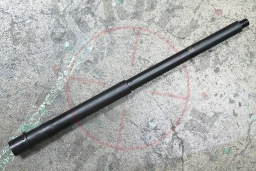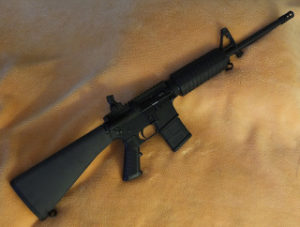 A couple days ago I talked about cheap guns and why they’re not as good as more expensive guns – at least if you’re betting your life on one. That doesn’t mean you need to spend $1500 on a Daniel Defense or $2500 on a KAC SR-15 to have a reliable weapon. I decided to try my hand at a home built AR-15 on a budget. Building your own has a few advantages. For one thing, you can get exactly the parts you want. For another, you can spread the cost out over time. The best reason for me is for learning how to do it. If you build your own AR-15, you’ll be able to maintain, repair, and upgrade it yourself. With that in mind, I decided to build a budget AR-15.
A couple days ago I talked about cheap guns and why they’re not as good as more expensive guns – at least if you’re betting your life on one. That doesn’t mean you need to spend $1500 on a Daniel Defense or $2500 on a KAC SR-15 to have a reliable weapon. I decided to try my hand at a home built AR-15 on a budget. Building your own has a few advantages. For one thing, you can get exactly the parts you want. For another, you can spread the cost out over time. The best reason for me is for learning how to do it. If you build your own AR-15, you’ll be able to maintain, repair, and upgrade it yourself. With that in mind, I decided to build a budget AR-15.
Budget, not cheap…
This is a budget gun, not a cheap gun. I did use some cheap parts, but the important ones are high quality. I used Aero Presision upper and lower receivers. The lower parts kit (lpk) is CMMG, and a friend gave me a Sionics enhanced mil spec trigger. The buffer tube assembly is BCM. Barrel is 16″ M4 profile with 1:7 twist, carbine gas, F marked FSB and chrome lined bore. Except for the barrel, all are solid choices based on past experience and mfg. reputation. Since the rest of the parts don’t affect reliability, I used the cheapest ones I could find: generic M4 butt stock, A2 grip, cheap no-name charging handle, and Magpul MOE trigger guard and fore end. I already had the buttstock and charging handle. All in, I’m at about $570 in parts. If I’d had to buy a trigger, butt stock , and charging handle it would be about $100 more.
Just cheap…
By comparison, I could have built my AR using Palmetto State Armory’s (PSA) rifle build kit. For only $399.95 (including shipping) it comes with everything you need to build an AR-15 except the lower receiver. Add $70 or so for a lower and you have a complete AR-15 for less than $500. Not bad for a range toy, but not as good as my $570 (or $670) build.
With the PSA kit, you don’t get a chrome lined barrel. The bolt isn’t 158 carpenter steel. I don’t know who makes their buffer tube, but I do know the BCM tube I used is duty grade – not likely to blow up in my face. The parts in the CMMG lpk (esp. pins and springs) are known quality parts. I don’t know what PSA puts in their lpks. For a plinker or range toy it probably doesn’t matter. For a gun that’s going to be used for self defense, it does – at least to me.
The gory details…
I didn’t want to spend a lot of money, but I wanted parts that would work good and last a long time. That can be a tricky with the AR-15 because there are so many choices for parts. AR parts companies seem to come and go on a daily basis. I decided to spend where I needed and go cheap everywhere else. The important parts are the receiver set, LPK, BCG, and barrel. Everything else is easy to replace or upgrade later.
My lower receiver is an Aero Precision A15 for $70. Fit, finish, and function is great and it’s only $20 more than a Poverty Pony lower. I used a CMMG lpk ($40). Again, this is a known good quality piece of kit. For the trigger I cheated – one of my friends let me have a Sionics Enhanced mil spec trigger. If I had to buy it, it would have added $55 to the cost of my rifle. It looks exactly like an ALG ACT I own, down to the casting (forging?) marks on the trigger and hammer. No creep and crisp break. The buffer tube assembly is BCM. For around $60 I like the peace of mind knowing it’s strong enough to not break on recoil and put my eye out.
The upper receiver is an Aero M4. It houses a Toolcraft bcg with an MPI’d and HPT’d Carpenter 158 steel bolt. I used a BCM Gunfighter charging handle because they work well and seem to be break-proof. Gas tube is a Spike’s Tactical melonite piece and my muzzle device is just a standard A2 flash hider. Barrel specs are mentioned above. I did cheap out on the furniture – the stock is a generic M4 and the hand guard is a used Magpul MOE. I still need to get the sight post, pin, and spring for the FSB and a rear sight.
A work in progress…
Even though I haven’t finished this rifle, I already have some upgrades in mind. I know for sure I’m going to replace the butt stock. The M4 I have on it now sucks. My second upgrade will probably be to free float the barrel. In the mean time I just want to finish it and run it hard. Let’s see what breaks and what doesn’t…
Peace out,
porcupine





 I’m filing this under
I’m filing this under 

 I’ve been ordering back issues of
I’ve been ordering back issues of 